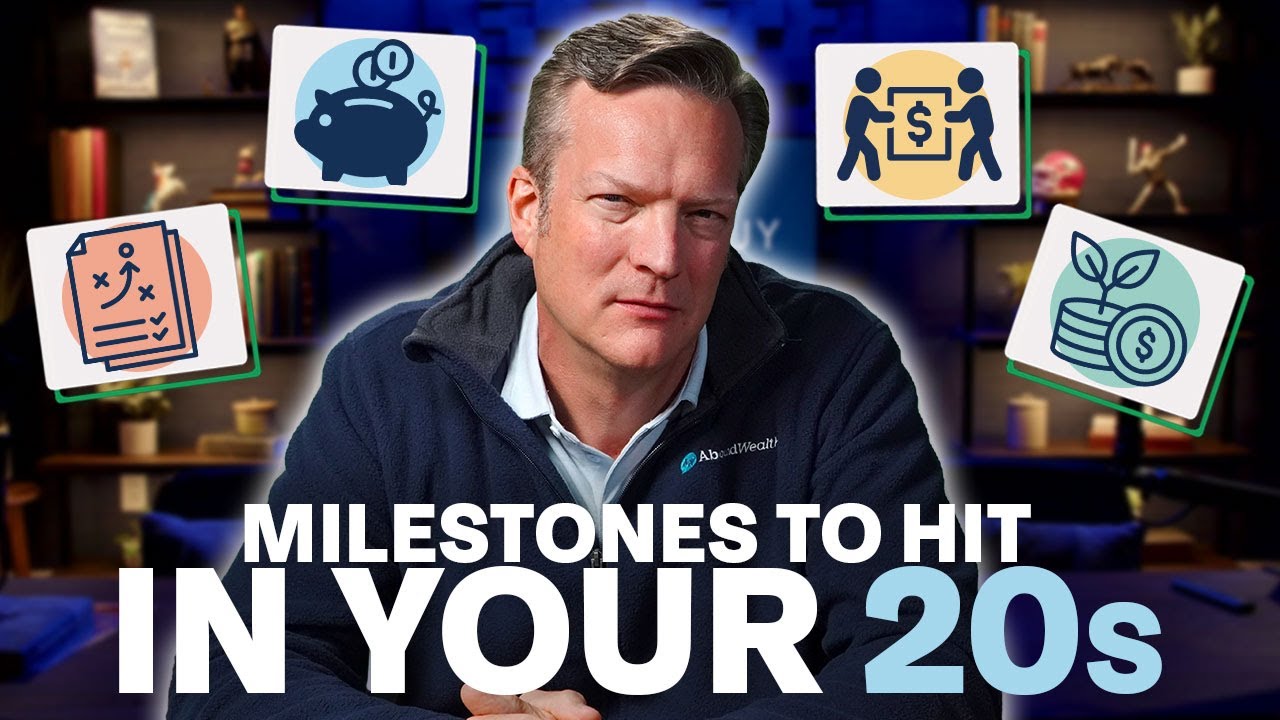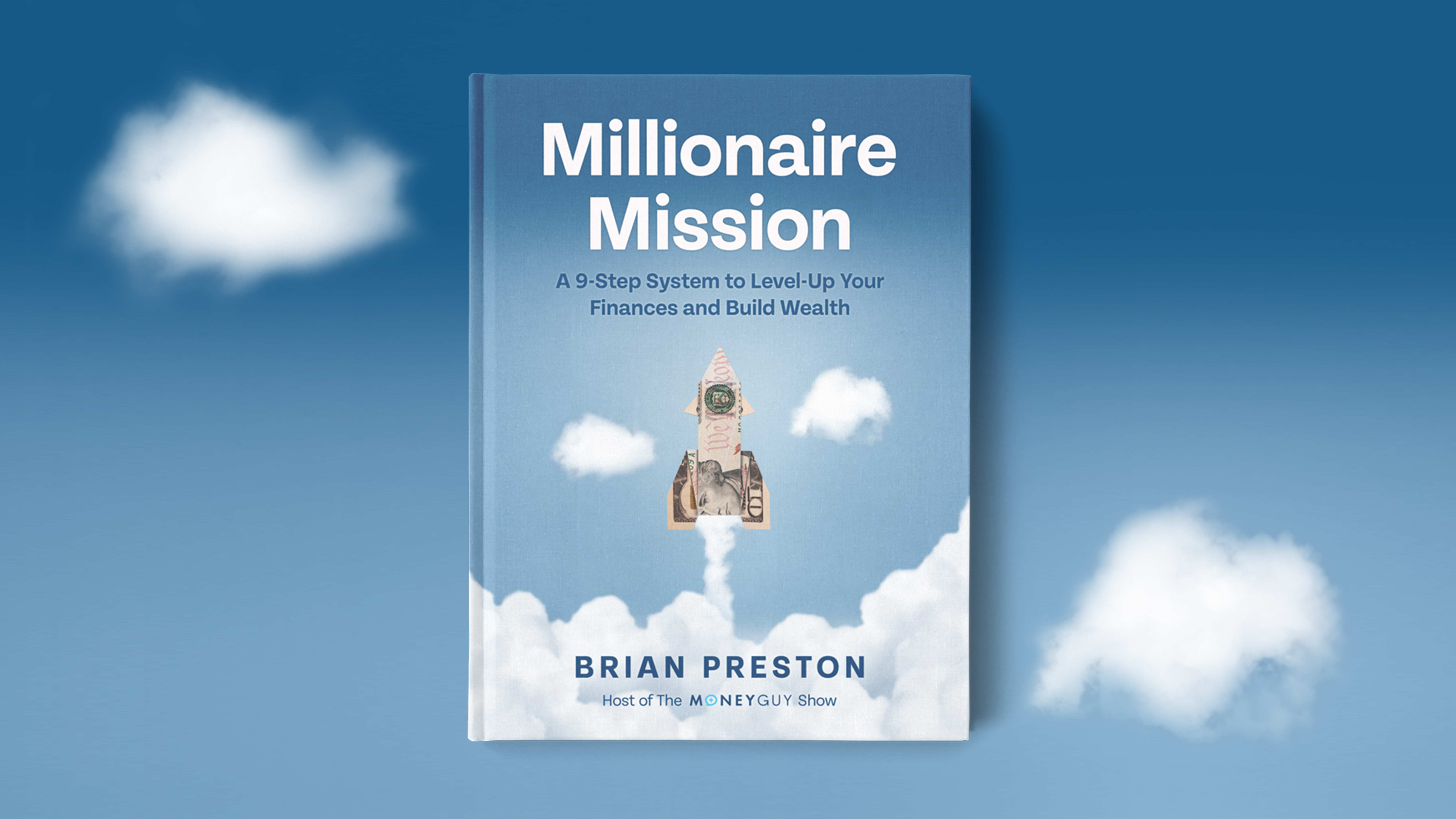There's another side to this coin, just like we just showed: markets up. Makes sense to have lump-sum investing. But what if you were buying when we were cherry-picking this, when markets were at the peak volatility of losing money? What does that look like? Yeah, let's lay it out now: the case for dollar-cost averaging. Because you already said academically, the Vanguard study said that about 70 percent of the time, lump-sum investing would behave. However, we as investors are not incredibly logical, rational creatures. We know that 80 percent of personal finance is behavioral. So perhaps some of the behavioral factors come into play. And it's just like you said, Brian, what about during those bear markets? What about during those downturns? What about during those frightening times in the market? Is lump sum necessarily the best suggestion?
Well, I think we need to be careful with statistics, because they don't always reflect real life. And the fact that you might behave completely differently, tying into what you said, when you see a stat that's 68 percent of the time markets make money, you're like, 'Wow, that's the lion's share, that's the majority.' But you ought to ask yourself, do the simple math. If 68 percent of the time it makes money, that means 32 percent of the time it could potentially lose money. And by doing it all at once, that's almost a third of the market. So if we have a huge sum of money, life-changing money, you're probably going to be pretty sick. And if you put in a million dollars and it loses a big chunk of money all at once, that's what we're trying to protect. When you look at strategies like dollar-cost averaging, how do we make sure you don't make the worst decision of selling? Because emotionally, you get rocked when your portfolio loses 20 to 30 percent. But during a volatile period, the worst thing you can do is actually just walk away from it and sell it, go to cash, because you want comfort. That's what we want to do. Let's do a case study. Let's see what happens when you hit a volatile period and make a case now for dollar-cost averaging.
Previously, we looked at investing a lump sum versus dollar-cost averaging in March of 2009. Well, what if we back it up a little bit and we look at the same type of scenario, but we do it in October of 2008, just a few months prior? We're going to have one investor who invests $120,000 as a lump sum. Another investor starts in October of 2008, investing $12,000 a month for 10 months. Now you can see that it's flipped. The lump-sum investor who put all the money in October, now that portfolio has only grown to about $627,000. However, the individual that was easing it into the market over that 10-month period has a portfolio value over $810,000. So again, that's almost a $200,000 spread in the other direction from the previous case study.
Now I want to make sure, because it's fun to look at the numbers, but we need to put a little context and perspective on this. For somebody who made this kind of worse investment, look, you were just unlucky in the fact that you invested at the wrong time. Because you put your money in and then all of a sudden you get the Lehman Brothers announcement and the market goes crazy. Because you hear about Lehman Brothers, Bear Stearns, this is what was going on during the Great Recession. We were worried, is the financial system about to collapse? Now, before we get caught up in just this strategy of lump sum versus dollar-cost averaging, I still want you guys to notice both of these strategies are up six to sevenfold from what the original investment was. So even if you're a losing investor on your strategy, if you just stick with it for the long term, you're going to be rewarded. But I just want to make sure the 'stick with it' actually sticks, because a lot of people are going to get crushed like this in the beginning. You might just give up.
So I think what we've shown here is that in times when the market is declining, dollar-cost averaging is likely to be more advantageous than lump-sum investing. But in the times when the market is already at the bottom and it's going to rise, then lump-sum investing is going to do better. The problem is, none of us have a crystal ball. None of us know exactly where we are in the market cycle. So it makes the decision on which one to do pretty difficult, not knowing what the future looks like.
Yeah, and I also want to add that when it rains, it pours. You know, I've shared with you guys that a lot of bad things happen when you hit market volatility. You have... they're extroverts, they like to hang out together. And the fact that you've got job losses, the real estate market goes bad, you also have the stock market losing over 20 percent, going to bear market status. And look, we have a stat that shows that typically in all economic cycles, if you look at the returns of the S&P 500, you lose 1 percent or greater in the S&P 500 12 percent of the time on an annual basis. However, when you hit bear market status, it's twice as often, double. So you can quickly see that it's very likely that 32 percent where markets are going underperformed. Through dollar-cost averaging would be better than lump-sum investing. They're going to be grouped in with other volatile periods. So just be careful, and that's what we want to talk about. We love dollar-cost averaging, but even you can screw that up by doing it too much.
Yeah, I think one of the things that you might be hearing is, 'Okay, guys, I hear you. I'm a little nervous about investing, you know. Maybe I just came into an inheritance or I sold a business, and I want to do this, but I'm nervous.' And what I'm hearing you say is that if personal finance is behavioral, perhaps I ought to put a behavioral block in place to protect me. So I'm going to dollar-cost average, but I'm going to kind of take it to the 18th degree. I really want to do that. Well, that may not actually be the best scenario either. Let's look at a tale of three investors. Let's look at Dixon, Kim, and Saul. Daniel, thank you so much for the names, that's awesome. Dixon receives an inheritance of one million dollars and decides, 'Hey, you know what? I'm going to invest everything in the market right away. I'm going to be a lump-sum investor.'
Kim receives the exact same inheritance, a million dollars. But she says, 'You know what? I'm going to do it differently. I'm going to dollar-cost average, and I'm going to do it over 12 months. I'm going to invest $83,333 every month, the same day of the month, over the next 12 months.' Well then we have Saul. Saul says, 'You know what? I also received that inheritance of a million dollars, but I'm a little more nervous. I'm going to do it even more slowly. Instead of easing this in over 12 months, I'm going to take two full years. I'm going to take 24 months and invest about $42,000 each month so that I can really take this thing nice and slow.'













